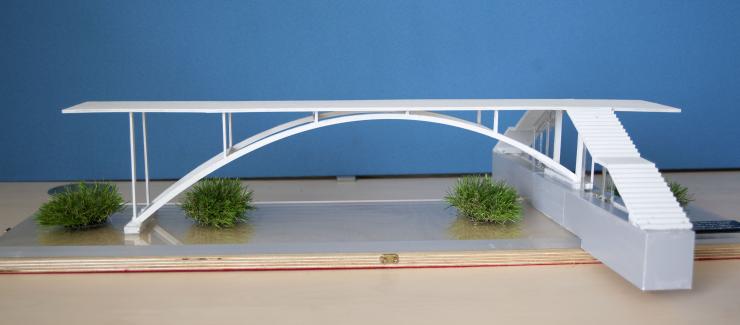Emeritus Professor Wanda Lewis from the School of Engineering at the University of Warwick in the UK has used the principle of constant stress to shape arch bridges subjected to the permanent load of their own weight.

Above: A mock-up of a constant stress arch on the University of Warwick campus (Credit: University of Warwick)
The concept has been explored in the paper Constant stress arches and their design space, published in the journal Proceedings of the Royal Society A 478: 20210428.
“Over the last thirty years I have been researching how to make robust structures that are stronger than ever by using form finding and applying constant stress inspired by shapes found in nature,” she said. “The new type of arch bridge style is therefore not only strong, but a natural formation presenting a new style of architecture.”
Constant stress is observed in natural objects such as trees, shells or bones - objects that are known to be highly optimised in terms of their high strength-to-mass ratio. The work to develop the constant stress arch has made use of reverse-engineering design processes in which the shape of a structure is determined through a process of form-finding. It is a moment-less form, said Lewis, which means it responds to permanent load in a simplest possible way by generating only axial stress without bending action, and a constant value of stress that the cross-section area can accommodate.
Further work will investigate arch stability and propose appropriate levels of constant stress, so that the arches don’t exceed their design strength limits when subjected to the ultimate load or become too heavy when the chosen value of stress is too low.
Lewis said that constant stress arches may present a construction challenge, due to their continually varied cross-section and high level of accuracy required in manufacture. However, their simple response to loading has the potential to solve durability and sustainability problems facing future infrastructure.

Above: A model of a constant stress arch (Credit: University of Warwick)



